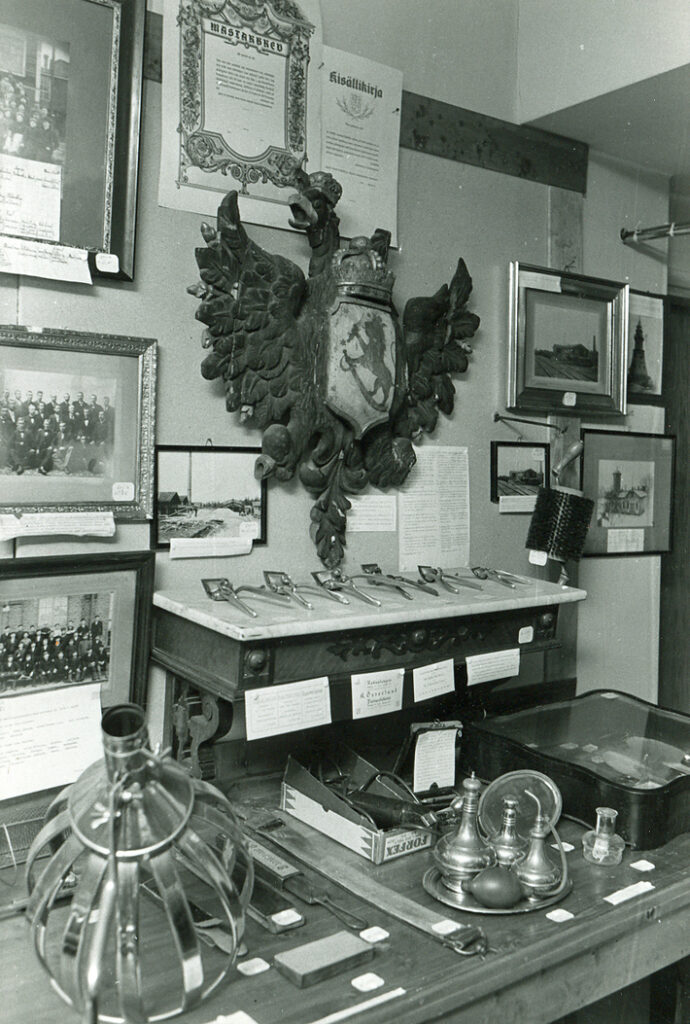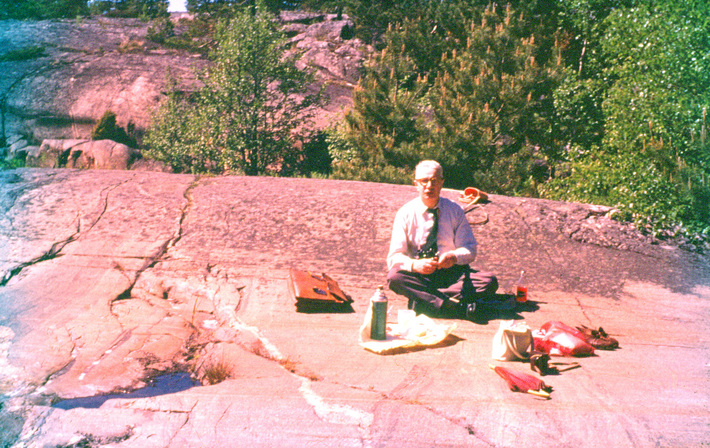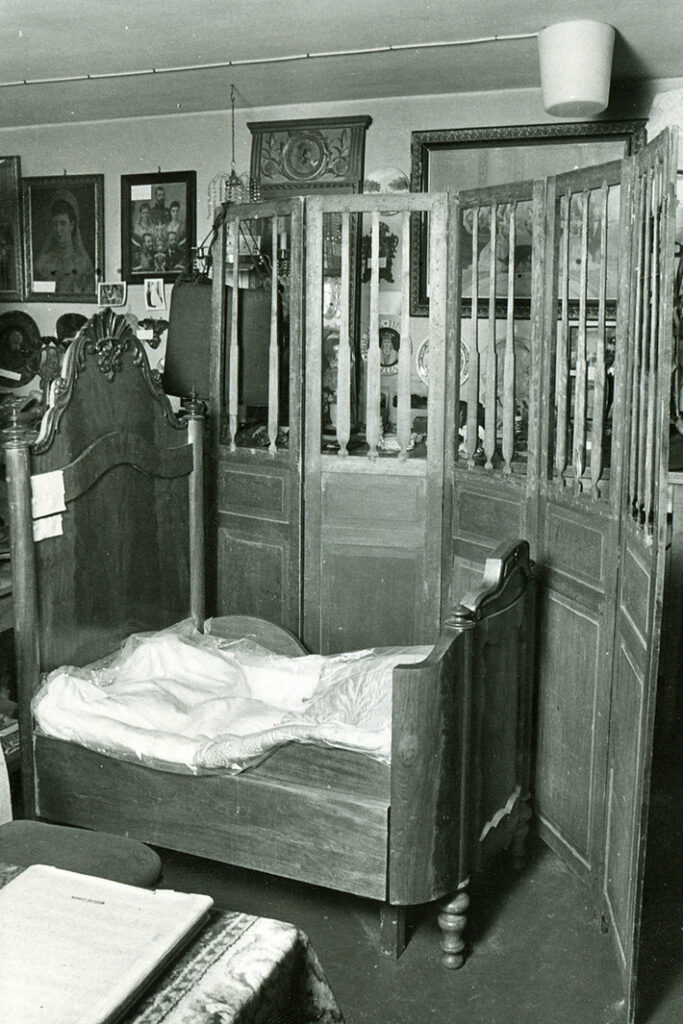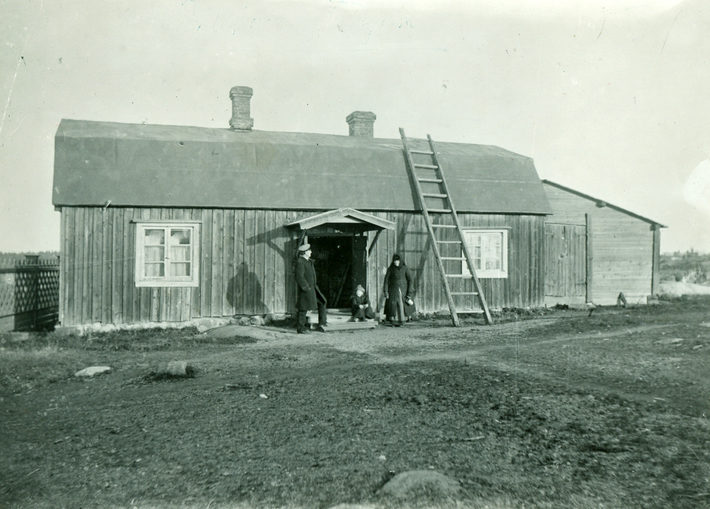
Hangon museo perustettiin jo vuonna 1907 vaikka alkutaival oli hieman kangerteleva. Tammisaareen oli perustettu oma museo 1906, joten pitihän myös Hankoon saada sellainen. 1900-luvun alku oli muutenkin vilkasta aikaa museokentällä Suomessa. Tärkeätä oli nostaa esille Suomen erillispiirteet vuosisadan alun venäläistämisyritysten keskellä. Museo aloitti toimintansa Fohlinin tuvassa Korkeavuorenkadulla.
Laura Lotta Andersson | Museum director
Establishing a museum
Hangon kotiseutuyhdistyksen perustamiskokous pidettiin 14.11.1907. Conrad Appelgren valittiin puheenjohtajaksi, Jeja Roos varapuheenjohtajaksi ja Gideon Lax sihteeriksi. Appelgren ja Roos olivat Hangon merkkihenkilöitä, ja molemmat olivat kiinnostuneita historiasta. Yhdistyksen tavoitteiksi on Appelgren kirjannut, että yhdistyksen tulee tutkia historiaa, taloutta, maataloutta, kalastusta, eläinlajeja, metsänhoitoa, kasvimaailmaa, kansan olosuhteita, sosiaalisia kysymyksiä, työväen vakuutuksia, kansankirjastoja, kotiseutuvalokuvia, linnoitusraunioita ja Hauensuolen kaiverruksia.
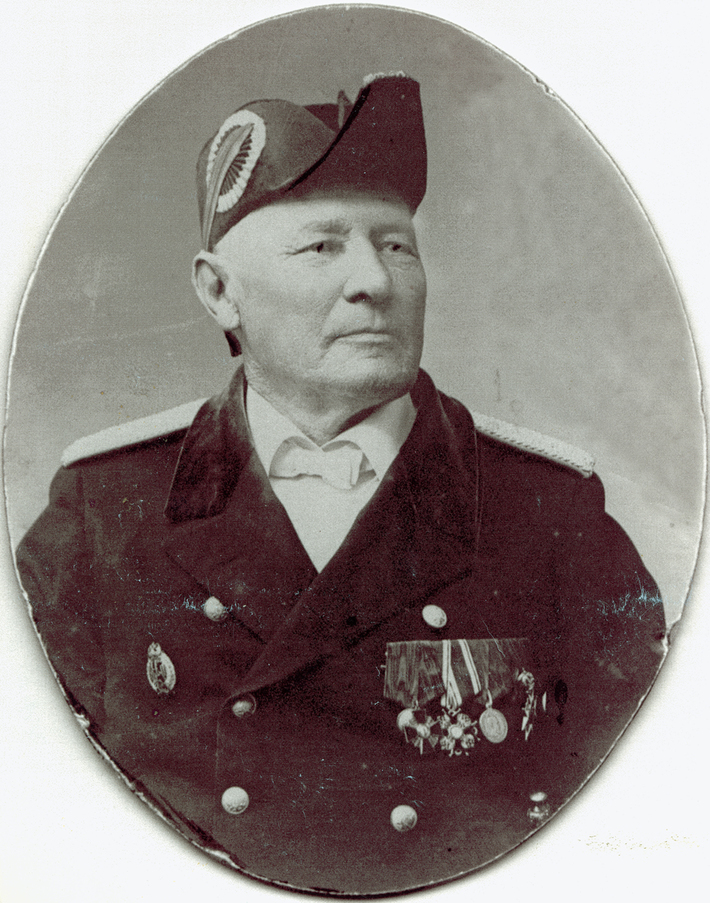
Hangon museon perustajiin kuulunut asemapäällikkö Conrad Appelgren, joka oli kaupungin ensimmäisiä asukkaita ja virkamiehiä.
Hangon museon ensimmäinen tila Fohlinin tupa
Kaupunki osti toukokuussa 1907 Fohlinin tuvan, joka sijaitsi Korkeavuorenkadulla 532 markalla eli noin 2 300 eurolla, jos verrataan rahan nykyarvoon. Kyseessä oli Hangon linnoitusalueella ainut rakennus, joka oli säilynyt Krimin sodan ajan polttamisten jälkeen 1850-luvulla.
Talossa oli tuolloin asunut Otto Fohlin ja hänen vaimonsa Kajsa Söderlund. Kajsa oli yksin kotona, kun englantilaiset tulivat polttamaan Hankoa, ja hän oli anonut, että hänen talonsa säästettäisiin; näin kävikin.
60 vuotta myöhemmin taloa pidettiin hökkelinä, mutta kaupungin vanhinta rakennusta pidettiin hyvänä museorakennuksena. Talo oli myynnissä kun Fohlinin mummo eli Kajsa Söderlund oli kuollut. Conrad Appelgren, Jeja Roos ja H. Lindgren saivat tehtäväkseen miettiä mitä rakennukselle tehdään. Kesti melkein vuoden ennen kuin työ oli valmis, ehkä osittain siksi, että kotiseutuyhdistyksen perustaminen varmistui marraskuussa. Työryhmä ehdotti, että sopivalle yhdistykselle, ehkä ensisijaisesti Hangon kotiseutuyhdistykselle annettaisiin 800 markkaa sisätilojen kunnostamiseen ja vuotuinen rahoitus. Jälkimmäistä ehdotusta ei hyväksytty, mutta nyt Hangolla oli oma museo, jossa oli esillä kaikki museon kokoelmat. Näitä kartutettiin myös koko ajan.
Ensimmäinen maailmansota keskeytti yhdistyksen toiminnan, ja vasta 1923 pidettiin uusi yhdistyksen kokous. Tällöin uutena puheenjohtajana toimi Conrad Appelgrenin tytär Ajna Appelgren, joka toimikin puheenjohtajana lähes kaksi vuosikymmentä.
Suunnitelmissa oli rakennuksen siirtäminen Kylpyläpuistoon, jotta museo olisi paremmin myös kylpylävieraiden tavoitettavissa, mutta tästä ajatuksesta luovuttiin korkean hinnan vuoksi. Fohlinin tupa oli kuitenkin huonossa kunnossa, mutta rahoja sen korjaamiseen ei ollut. Rakennusta kuitenkin korjattiin mahdollisimman paljon, jotta se olisi museoesineille sopiva. Jotta ei tuvassa olisi liian kosteata, hankittiin sinne kamiina.
The museum will get new premises in the town hall
Sodan jälkeen alkoi uusi aikakausi Hangon museon historiassa. Esineet oli maaliskuussa 1940 evakuoitu Tammisaaren kaupungintaloon, osa myös Turkuun.
Evakuoinnissa avustivat Turun historiallisen museon intendentti Nils Cleve ja maisteri Andersson. Vuonna 1945 valittiin kotiseutuyhdistykselle uusi hallitus, johon kuuluivat Birger Boström, Ragnar Ekqvist, Harry Nyman, Tor Karling, Yrjö Manner, C.O. Westman ja Tor Westerholm. Kotiseutuyhdistyksen tavoitteina oli saaristolaismuseon perustaminen, kotiseutumuseon perustaminen, arkistoaineistojen ja valokuvien kerääminen sekä kotiseutusuojelua ja kotiseuturakkauden levittämistä.
Yhdistys pyysi kaupungilta, että saisi kotiseutu- ja saaristolaismuseoksi Westergårdin, mutta kaupunkia uudelleen rakennettaessa tulisi ottaa huomioon sopivat tilat museolle. Esineet tulivat kesällä 1946 Westergårdiin. Birger Boström luetteloi esineet poikansa kanssa. Esineitä oli 565 kappaletta, 116 esinettä oli hävinnyt evakuoinnin aikana. Boström yritti saada museolle uusia esineitä, mutta työ oli vaikeata. Ainoastaan hänen anoppinsa Sayn-Wittgenstein-Berleburgin ruhtinatar Elisabeth lahjoitti pariisilaismalliset aamukengät.
Westergårdia ei ikinä oltu ajateltu pysyväksi tilaksi, muun muassa sijainnin vuoksi. Kaupungintaloon oli suunniteltu luentosali, mutta joka ei käytännössä soveltunut siihen tarkoitukseen. Museo pääsi sen sijaan muuttamaan sinne. Tila sijaitsi juhlasalin alapuolella ja käynti oli poliisitalon pihan kautta. Nils Cleve, joka nyt oli muinaistieteellisessä toimikunnassa, oli erittäin tyytyväinen uusiin tiloihin. Ainut ongelma oli, että museolla ei ollut varastoa, joten kaikkien esineiden täytyi olla esillä, mukaan lukien kaksoiskappaleet. Cleven ehdotuksesta esineet olivat pöydillä, koska ne olivat kaappeja halvempia. Nämäkin saatiin kaupunkilaisilta lahjoituksina, koska museo ei saanut kunnalta tukea, muuten kuin, että he eivät maksaneet vuokraa tilasta.
Yhdistyksen puheenjohtaja Carl-Olof Westman, varapuheenjohtaja Yrjö Manner ja sihteeri Birger Boström asettivat esineet teemoittain esille, ja museo voitiin avata keväällä 1952. Museo oli auki sunnuntaisin parina tuntina, ja vuodessa oli muutama sata kävijää. Ruotsalaisen lukion rehtori Birger Boström oli museon puuhamies ja virallisesti hänestä tuli museon intendentti vuonna 1956, ja hän toimi tässä toimessa vuoteen 1972 saakka.
Vuosien saatossa tuli paljon uusia lahjoituksia, mutta museolla ei ollut varastoa. Tästä syystä kotiseutuyhdistys pyysi, että Hangon kaupunki ottaisi museon haltuunsa, mikä tapahtuikin vuonna 1963. Lisätiloja ei kuitenkaan saatu, mikä vaikeutti museon toimintaa.
Uusien tilojen metsästys 1960-luvulla
Museolla oli periaatteessa hyvät tilat kaupungintalolla, mutta varastotilaa ei ollut. Tiloja mietittiin 1960-luvulla Hylliksestä tai silloin uudesta poliisitalosta. Seuraava vaihtoehto oli rakentaa kaupungintalon viereiselle tontille, jonne kirjasto sittemmin tuli.
Pisimmälle tehdyt suunnitelmat oli kaupungin omistamalle tontille Rantakadun ja Torikadun kulmassa. Täällä olevat 1890-luvulla rakennetut talot oli tarkoitus purkaa, koska moderniin kaupunkiin ei haluttu vanhoja rakennuksia. Tämä oli 1960-luvun ajattelutapa. Museoliiton sihteeri Riitta Heinänen oli sitä mieltä, että tontti sijaitsi keskeisellä paikalla, jonne kävijöiden oli helppo tulla.
Vuonna 1968 oli arkkitehtien Nils Aschanin ja Eric Adlercreutzin suunnitelmat valmiina. Kyseessä oli moderni museorakennus, jossa oli näyttelyhalli, varasto, galleria, sisääntuloaula, kokoontumistilat, kahvila, työtilat ja vahtimestarin asunto, lisäksi oli autoille varattu parkkipaikat. Valtuusto hyväksyi selvin äänin 26–1 suunnitelmat, mutta rahaa ei koskaan varattu talousarviosta museohankkeelle, ja vähitellen se vajosi unholaan. Toisaalta oli hyvä, että museo ei syyllistynyt vanhojen rakennusten purkamiseen.
Seuraava hanke kuitenkin onnistui. Jos uudelle rakennukselle ei kaupunki myöntänyt rahaa, niin vuonna 1970 sai museo 32 000 mk eli n. 47 000 €. Kyseessä oli 1793 rakennettu vallimiesten kasarmi, joka oli Krimin sodan aikana osittain tuhoutunut venäläisten itse tuhottaessa Hangon linnoitukset. Ensimmäisessä kaupunkisuunnitelmassa käytetään rakennuksesta nimitystä kirkkoraunio, vaikka ei tiedetä siellä koskaan olleen kirkollista toimintaa. Rakennusta kuitenkin tarjottiin Bromarvin seurakunnalle, jonne Hankokin kuului, mutta heidän mielestään rakennus oli liian pieni. Rautatieinsinööri Evert Wasastjerna teki 1882 piirustukset, jotka vastaavat nykyistä rakennusta. Valtio osti vuonna 1885 makasiinin, jossa varastoitiin tullaamattomia tavaroita, kieltolakiaikana viinakanistereita ja 1950-luvulla sillitynnyreitä.
Kun museo sai rakennuksen, tehtiin sinne puulattia, maalattian päälle, ja katto uusittiin. Tähän rakennukseen tuotiin sotiin, merenkulkuun, palotoimeen, metsästykseen ja kalastukseen sekä kansankulttuuriin liittyvä esineistö.
Vuonna 1982 tapahtui suuri muutos, kun museo sai Keksin yläkerran varastokseen. Tänne tuotiin lähes kaikki museon esineet. Museotiloissa voitiin nyt aloittaa vaihtuvat näyttelyt. Kaupungintalon näyttelytilasta luovuttiin 1991, ja sinne laitettiin museon arkisto. Keksin varasto on 40 vuodessa täyttynyt niin, että sinne ei mahdu enempää. Olemme siksi iloisia, että olemme saaneet uudet tilat kokoelmakeskus Leirasta. Nyt vielä jos saisimme tilan, jossa voisimme kertoa Hangon historiasta, niin olisimme tyytyväisiä.
Photos: Hanko museum


